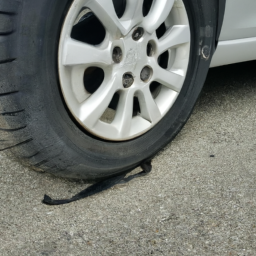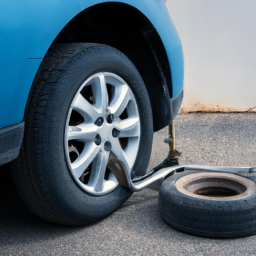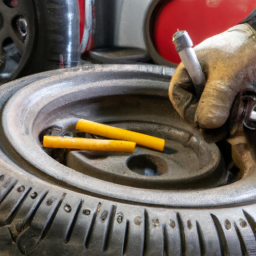Car Tyre Puncture: Causes, Symptoms and Precautions
One of the most frustrating things that can happen while driving your car is getting a tyre puncture. It can not only ruin your day but also cost you money. So, it’s important to be aware of the common causes of punctures, their symptoms and take precautions to prevent them from happening.
What causes a tyre puncture?
There are several reasons why your car tyre may get punctured. The most common cause is debris on the road like nails, screws, and glass pieces. Over time, exposure to sunlight and extreme temperatures can also weaken the rubber material, leading to tyre punctures. Damaged or worn-out tyres are more prone to punctures. Driving on rough or uneven roads and over-inflation of tyres can also cause punctures.
What are the symptoms of a tyre puncture?
As soon as you notice any of the following signs, you should pull over as soon as possible.
1) A sudden loss of air pressure
2) A hissing or popping sound from your tyre
3) Difficulty in steering and lack of control over the vehicle
4) Vibration in the steering wheel
5) Uneven wear on the tyre surface
6) Visible puncture on the tyre surface
What precautions should you take?
1) Regularly check your tyres for cuts, bruises and any signs of wear and tear. Replace them when they have crossed their recommended tread life.
2) Stay clear of construction sites and areas where there is debris on the road. Drive cautiously if you can’t avoid them.
3) Maintain the right air pressure in your tyres. Over-inflation reduces traction and creates stress on the tyre, whereas under-inflation causes the tyre to wear out faster and increases the risk of punctures. Consult your car manual to know the right pressure for your vehicle.
4) Avoid driving on rough or uneven roads, potholes, and sharp objects that can damage your tyres.
5) Carry a spare tyre and necessary tools like a wrench, jack and tyre sealant in your car. Check their condition regularly and replace any faulty equipment.
6) Get your tyres regularly checked by a professional tyre maintenance service. They can detect any underlying issues and fix them before they lead to punctures.
7) Drive cautiously and avoid sudden turns and stops. This puts unnecessary stress on the tyres and increases the risk of punctures.
In conclusion, getting a tyre puncture is an unavoidable part of driving. But, you can reduce its frequency and impact on your travel plans with proper maintenance and taking care on the road. Always remember to keep a check on your tyres and act promptly if you notice any symptoms of puncture.



